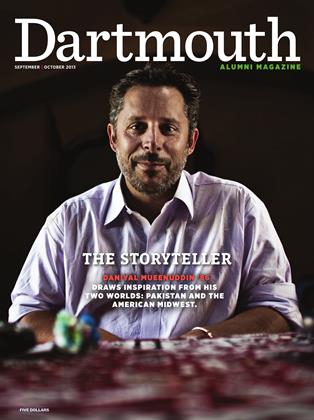As the world’s leading expert on digital forensics and image authentication, Farid’s techniques have earned him consulting jobs with intelligence agencies and the media. Here’s how he analyzed a controversial 1963 photo of J.F.K. assassin Lee Harvey Oswald. If Farid could prove the image had been doctored, it might support any of a multitude of conspiracy theories about the assassination. If proven authentic, the image could serve as evidence that Oswald owned weapons and had communist sympathies—furthering the case that he was the shooter.
FIRST LOOK
The big question in this case was, “Are the shadows in this photo inconsistent with a single light source—the sun?” At first look many observers, including Farid, suspected something “off,” as he says, about the length of the shadow under oswald’s nose. But Farid knows the naked eye is terrible at detecting photo manipulations. “We’ve done a number of studies and it turns out people suck at this,” he says. “Things that are fake they think are real, and things that are real they think are fake.”
SHADOWS
Farid has developed a variety of shadow analytics to investigate images. A general way to evaluate shadows in an image is to draw lines between the tips of the shadows and their source objects, see where the lines point, and see if they converge. It appears the line between oswald’s nose and the corresponding shadow would point straight up, while a line between the shadow of his head and the top of his head would point diagonally right—sug-gesting inconsistent shadows and possible image manipulation.
3-D MODELING
Farid replicated oswald’s head and body in a threedimensional model, then tried to position it to replicate the photograph, using the presumed position of the sun and camera. Eventually, he found a specific arrangement that produced the same shadow pattern in the model as seen in the photograph. He points to the darkness in the wells of the eyes, the shadows on the neck and under the lip, and, “surprisingly,” the long shadow under the nose as exactly the same on the model as in the image.
CONCLUSION
“It’s not a composite,” Farid surmises. “If it were fake it is almost unimaginable how it could have been done in 1963—or even today.” Grassy knoll conspiracy theorists, fear not: The photo could have been staged. But it was not manipulated or altered after it was taken. “As our digital forensic tools become more sophisticated, we have the ability to apply them to historic photos in an attempt to resolve some longstanding mysteries,” says Farid. Examples abound at the website of his firm, Fourandsix Technologies.
HANY FARID, COMPUTER SCIENCE PROFESSOR
COMMENCEMENT 45
Number of master of healthcare delivery science degrees awarded June 9 to the inaugural class in the program started by Jim Kim. Six of the degree recipients hold undergraduate degrees from the College.
 View Full Issue
View Full Issue
More From This Issue
-
 Cover Story
Cover StoryThe Storyteller
September | October 2013 By KEVIN NANCE -
 Feature
FeatureModern Family
September | October 2013 By ALEC SCOTT ’89 -
 Feature
FeatureThe Surrogacy Option
September | October 2013 By Lisa baker ’89 -
 Feature
FeatureClass Notes
September | October 2013 By DARTMOUTH COLLEGE LIBRARY -
 Feature
FeatureNotebook
September | October 2013 By DARTMOUTH COLLEGE -
 Sports
SportsRunning for His Wife
September | October 2013 By DAVID MCKAY WILSON







